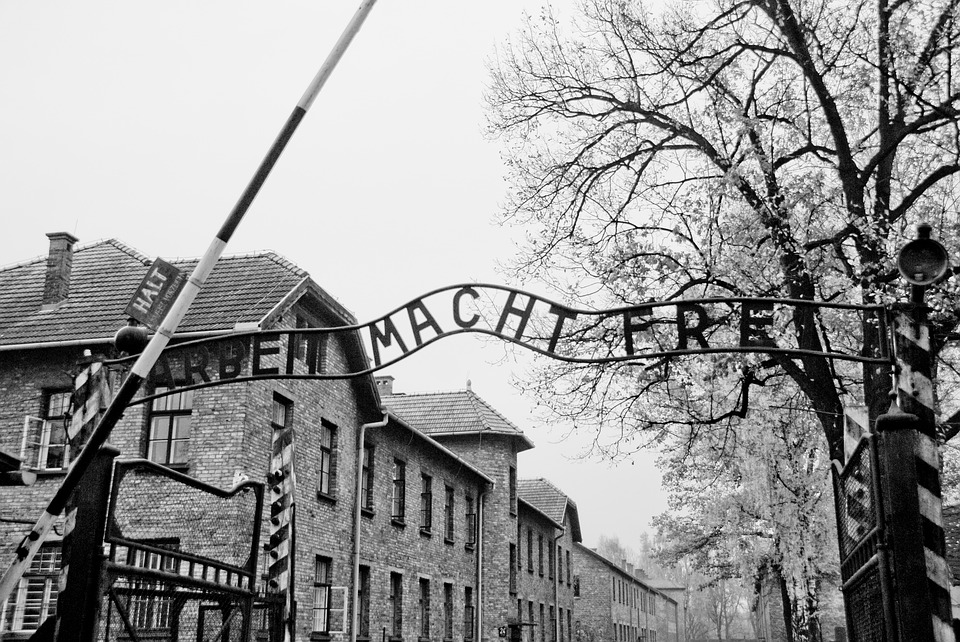UNESCO signs agreement with Successor States of Yugoslavia to install exhibition on Holocaust
Since 2010, UNESCO has provided diplomatic, financial and technical support to the Successor States of Yugoslavia to re-establish a joint permanent exhibition.

Ahead of the International Day of Commemoration in Memory of the Victims of the Holocaust, Bosnia and Herzegovina, Croatia, Montenegro, North Macedonia, Serbia, and Slovenia signed a historic agreement at UNESCO Headquarters to renovate Block 17 of the Auschwitz-Birkenau Memorial and Museum and install a new and joint permanent exhibition on the Holocaust in the former Yugoslavia and the fate of Jewish and non-Jewish people deported.
Block 17 of the former Auschwitz I camp was built in 1941 by its inmates, to house a growing number of prisoners of the German Nazi concentration and extermination camp. As the killing mechanism accelerated, its sombre walls became a monument of anguish and despair. Most of the 20,000 deportees from Yugoslavia passed through Block 17. After the Auschwitz-Birkenau Memorial and Museum decided to house national exhibitions, Block 17 became home to the Yugoslav pavilion in 1963. However, following the breakup of Yugoslavia, this pavilion was eventually closed. It has stood empty since 2009.
Fourteen years of negotiations and joint work
Since 2010, UNESCO has provided diplomatic, financial and technical support to the Successor States of Yugoslavia to re-establish a joint permanent exhibition. At the outset, an international steering committee, involving experts, cultural institutions and ministries of culture of the region, and also international experts from the French Shoah Memorial, the German Topography of Terror, and the U.S. Holocaust Memorial Museum was created to establish a common narrative, under the coordination of UNESCO.
From 2012 to 2019, UNESCO facilitated a series of meetings during which cooperation between the six countries concerned was negotiated. The resulting agreement covers the renovation of Block 17 and the creation of a new permanent exhibition that will be structured around four themes – time and space; victims; perpetrators and collaborators; resistance fighters –, focusing on those deported to Auschwitz as a result of Nazi persecution policies during the Second World War in the former Yugoslavia. The exhibition will be designed by the architect Daniel Libeskind, who is renowned for his ability to evoke memory through architecture, and is supported by Austria and the Herman Family Trust.
The signing ceremony was attended by the Ministers of Culture of the six participating States or their representatives, and by UNESCO Director-General Audrey Azoulay who, at the States’ request, has agreed to act as depositary of the agreement. The Auschwitz-Birkenau Memorial and Museum is also a UNESCO World Heritage site since 1979.
UNESCO supports Holocaust Education in all regions of the world UNESCO is committed to ensuring that new generations everywhere are taught the true facts about The Holocaust, through its International Program on Holocaust and Genocide Education in partnership with the U.S. Holocaust Memorial Museum, and with the support of the Government of Canada. Since 2015, the program has reached 24 Member States across all UNESCO regions. The current program cycle is supported by the government of Canada and involves the participation of Brazil, Cambodia, Colombia, Ecuador, Greece, India, Morocco, Nigeria, Serbia, Rwanda and the United Arab Emirates.
Since 2015, UNESCO has been helping education stakeholders to develop long-term initiatives to reinforce education about the Holocaust and genocide in their respective countries. The Organization currently trains all those who are on the frontline – teachers, educators, school directors, and educators – so they are equipped to address antisemitism in classrooms and beyond to prevent antisemitism in Croatia and Greece – the first of a series of 12 European workshops funded by the European Commission, that will continue this Spring in Slovenia, Austria, Belgium, France and Spain.
In Serbia, UNESCO works with the Staro sajmište Memorial Centre and Museum of Genocide Victims to design an exhibition and educational materials on the Holocaust. And in Sarajevo, the Organization is assisting with the development of a Holocaust museum to commemorate the destruction of over 80% of the Jewish population of Bosnia and Herzegovina.
- READ MORE ON:
- Holocaust
- Yugoslavia
- UNESCO










